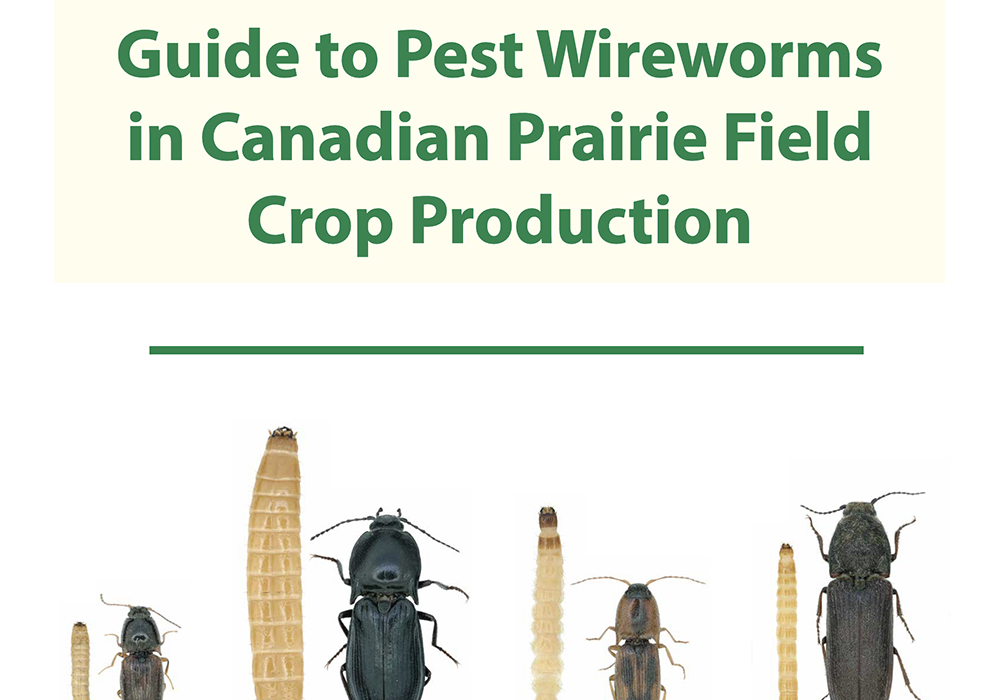Got wireworms? There’s a guide for that

Wireworms have been an agricultural pest on the Prairies for more than 100 years, but they remain a bit of a mystery.
Growers and agronomists in Western Canada know that wireworms are a problem, but they don’t understand the size of the problem or the economic impacts of wireworms.
Wireworms are also difficult to find and count. They may move to the surface in spring to feed on cereal and pulse crop seeds and seedlings, then they tunnel down into the soil and do whatever they do.
“They come up close to the soil surface and they’re detecting anything that produces CO2. (That’s) what germinating seeds produce,” said Haley Catton, a cereal crop entomologist with Agriculture Canada in Lethbridge.
“A very young, young plant, or even a seed that’s just germinating, is very vulnerable to death with just a few bite marks in the right place.”
Wireworms are a problem for many cereal growers in southern Alberta and parts of southern Saskatchewan. Wireworms, the larval stage of click beetles, feed on cereal crops early in the growing season and cause crop thinning or yellowing of the plant.
To shed more light on wireworms, Catton and her colleagues at Agriculture Canada have published a field guide on pest wireworms in prairie crop production. The guide can be found at https://publications.gc.ca/collections/collection_2021/aac-aafc/A42-125-2021-eng.pdf
The Alberta Wheat Commission, the Western Grains Research Foundation and Ag Canada provided funding to develop the field guide.
“We have summarized the knowledge of this persistent and complicated pest on the Prairies,” says the foreword to the guide. “We have also identified major gaps in knowledge and where research is needed…. Our target audience include farmers, agronomists, crop scouts, extension personnel and anyone else interested in the impact of wireworms on Prairie crop production.”
The 86-page document answers questions like: what are wireworms, what types of wireworms exist on the Prairies and what damage do they cause?
It also covers more complex topics, such as the life cycle of prairie wireworms, how to monitor wireworms and options for integrated pest management.
“Wireworm management is challenging: any given field may have several wireworm species, each with its own life cycle and behaviours and with several overlapping generations,” the guide says.
For the last 15 years, or so, wheat growers in Alberta and parts of Saskatchewan have relied on neonicotinoid seed treatments to control wireworms. But the insecticide only immobilizes wireworms, it doesn’t kill the pest or reduce wireworm populations.
In the fall of 2020, BASF registered a new insecticide, called broflanilide, that does more than stun wireworms.
The Agriculture Canada guide mentions field trials conducted in British Columbia that show broflanilide is effective against wireworms.
“Broflanilide plots at 5 grams active ingredient per 100 kilograms of wheat seed had significant reductions the number of neonate wireworms (2 of 7 years) and resident wireworms (4 of 7 years),” the guide says.
Growers need a new chemical tool to fight wireworms, but an insecticide seed-treatment may not be needed every spring and isn’t the only solution.
Producers need better tools to monitor wireworms and an answer to: how many wireworms is too many? If a grower doesn’t have a problem with wireworms, it’s not necessary to plant a seed coated with an insecticide
“All pest control methods have pros and cons… and producers need more information to decide when a chemical application is in their best interest,” the guide states.
Agriculture Canada scientists are also studying crop rotation, biological control and other Integrated Pest Management methods, to evaluate their effectiveness against wireworms.
“The wireworm problem on the Prairies is complex, with many factors to consider,” the guide says. “Research must continue to seek the most sustainable and efficient ways to mitigate damage from these pests with the least expense and non-target effects possible.”
The guide can be downloaded at https://publications.gc.ca/site/eng/9.900365/publication.html
For information or a printed copy of the guide, contact Agriculture Canada at 855-773-0241; or in Lethbridge at 403-327-4561.
Contact robert.arnason@producer.com
Source: producer.com

